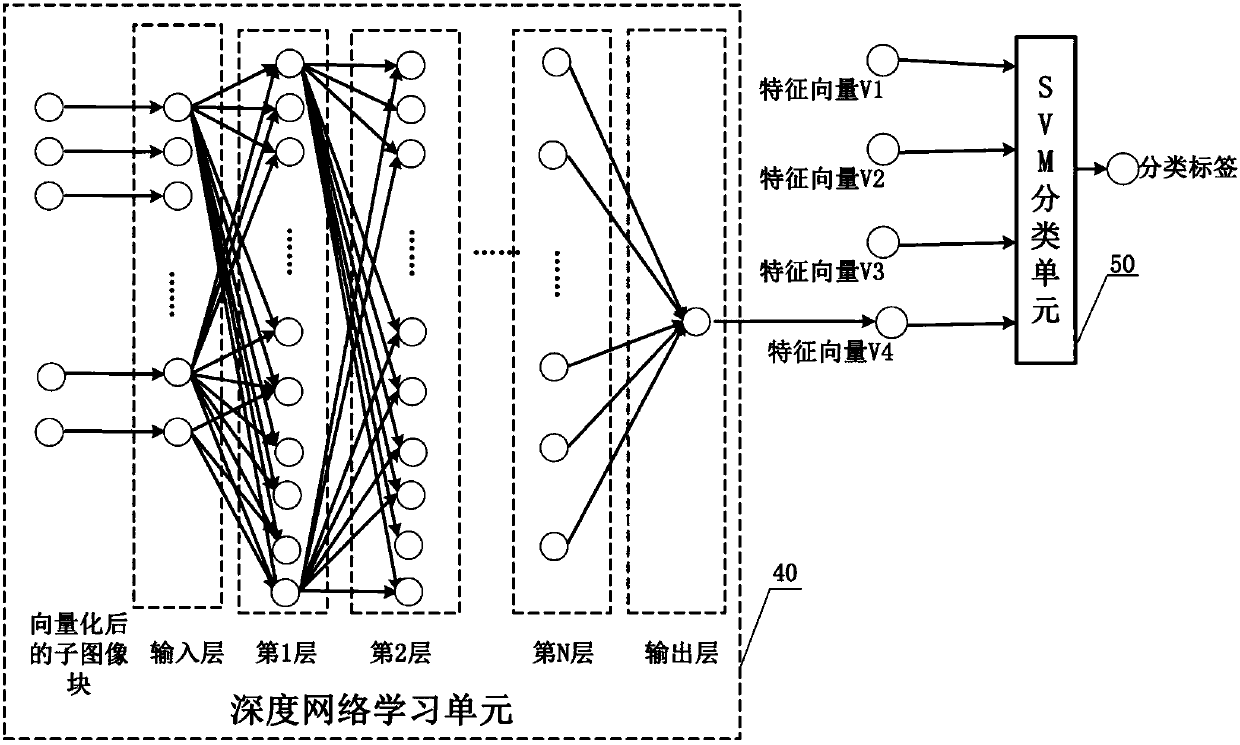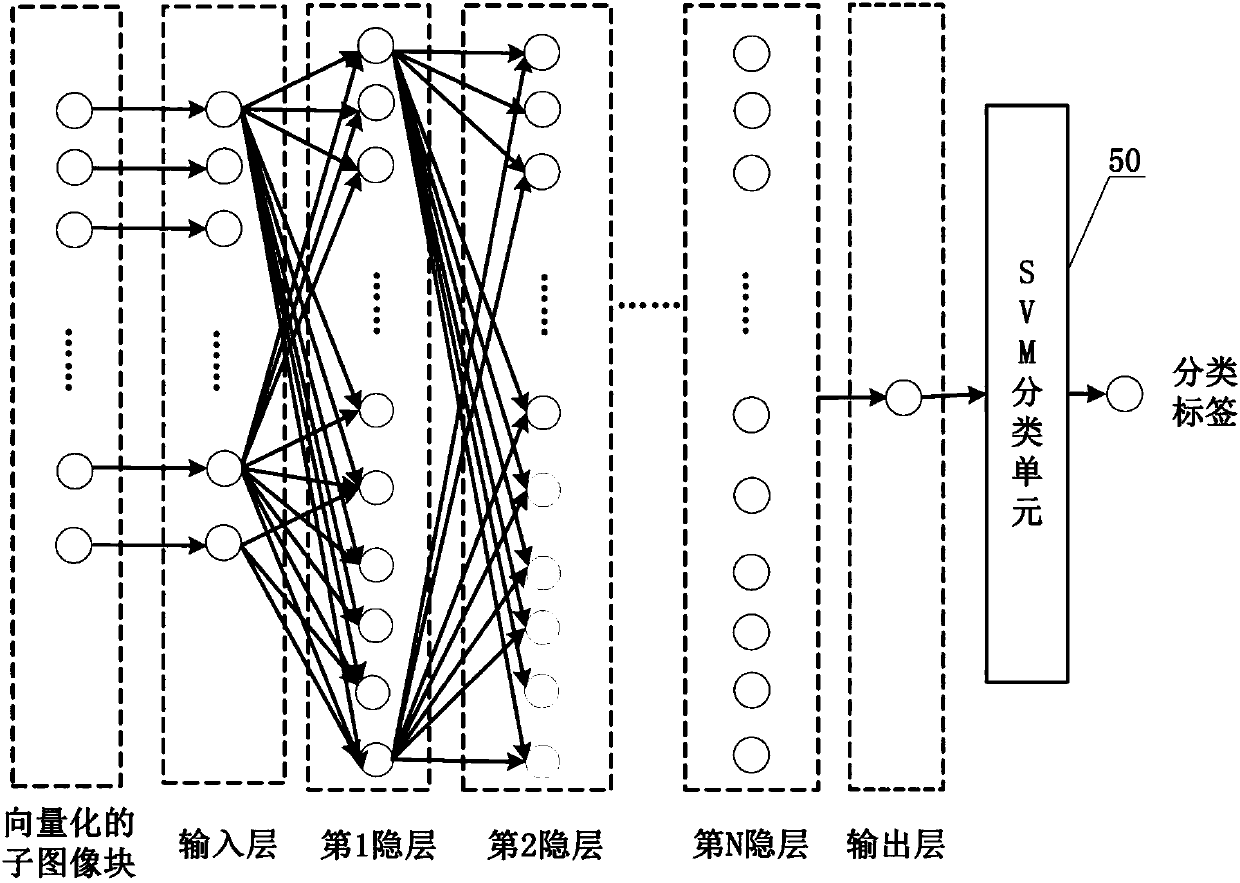CT image processing system and method for pneumoconiosis
A CT image and processing system technology, applied in the field of pneumoconiosis-oriented CT image processing system, can solve the problems of no pneumoconiosis cases, pneumoconiosis diagnosis and grading rely on the subjective judgment of doctors, image processing methods, etc.
- Summary
- Abstract
- Description
- Claims
- Application Information
AI Technical Summary
Problems solved by technology
Method used
Image
Examples
Embodiment 1
[0063] Such as figure 1 As shown, the present invention provides a pneumoconiosis-oriented CT (Computed Tomography, computerized tomography) image processing system, including an image processing server 10, which includes a CPU 11, a graphics processor 12, and a DICOM (Digital Imaging and Communications in Medicine, Medical digital imaging and communication) read-write unit 13; PACS (PictureArchivingandCommunicationSystems, audio-visual archiving and finishing system) system is installed in the graphics processor 12, and the data transmission between CPU11 and graphics processor 12 is through PCI-E (PCIExpress, bus interface ) is completed; DICOM read-write unit 13 reads and analyzes the CT image of pneumoconiosis from the PACS system of graphic processor 12; Preprocessing of correction, image denoising and artifact removal; image segmentation unit 30, which performs lung parenchyma segmentation, lung nodule segmentation and lung nodule false positive target removal on the pre...
Embodiment 2
[0069] On the basis of Embodiment 1, this embodiment provides a pneumoconiosis-oriented CT image processing method, including the following steps: DICOM read-write unit 13 reads the CT image from the graphics processor 12 and parses it into a three-dimensional volume image; The CT image preprocessing unit 20 performs preprocessing of grayscale unevenness correction, image denoising and artifact removal on the three-dimensional volume image; the image segmentation unit 30 performs lung parenchyma segmentation, pulmonary nodule segmentation and pulmonary nodule segmentation on the preprocessed CT image. Nodule false positive target removal; the deep network learning unit 40 extracts the high-dimensional features in the sub-image block where the pulmonary nodule area segmented by the image segmentation unit is located; the SVM classification unit 50 receives the high-dimensional features for classification.
[0070] The pneumoconiosis-oriented CT image processing method provided b...
Embodiment 3
[0091] In the pneumoconiosis-oriented CT image processing method, the learning process of the deep network learning unit 40 needs to calculate the data of a large number of nodes in multiple levels, resulting in a very slow learning speed of the deep network learning unit 40 . On the basis of Embodiment 2, the pneumoconiosis-oriented CT image processing method provided in this embodiment also includes outputting the feature vector V4 through a parallel acceleration method, such as Figure 4 As shown, it specifically includes the following steps:
[0092] Carry out data segmentation, divide the same CT image into I sub-image blocks according to the total number of pulmonary nodules in the CT image, and extract the sub-image block G that can cover the largest pulmonary nodule area i , (i=1,2,...,I), each sub-image block has at most N 3 threads; each sub-image block has an exclusive video memory space, and a deep network model is trained correspondingly in each sub-image block; ...
PUM
 Login to View More
Login to View More Abstract
Description
Claims
Application Information
 Login to View More
Login to View More - R&D
- Intellectual Property
- Life Sciences
- Materials
- Tech Scout
- Unparalleled Data Quality
- Higher Quality Content
- 60% Fewer Hallucinations
Browse by: Latest US Patents, China's latest patents, Technical Efficacy Thesaurus, Application Domain, Technology Topic, Popular Technical Reports.
© 2025 PatSnap. All rights reserved.Legal|Privacy policy|Modern Slavery Act Transparency Statement|Sitemap|About US| Contact US: help@patsnap.com



